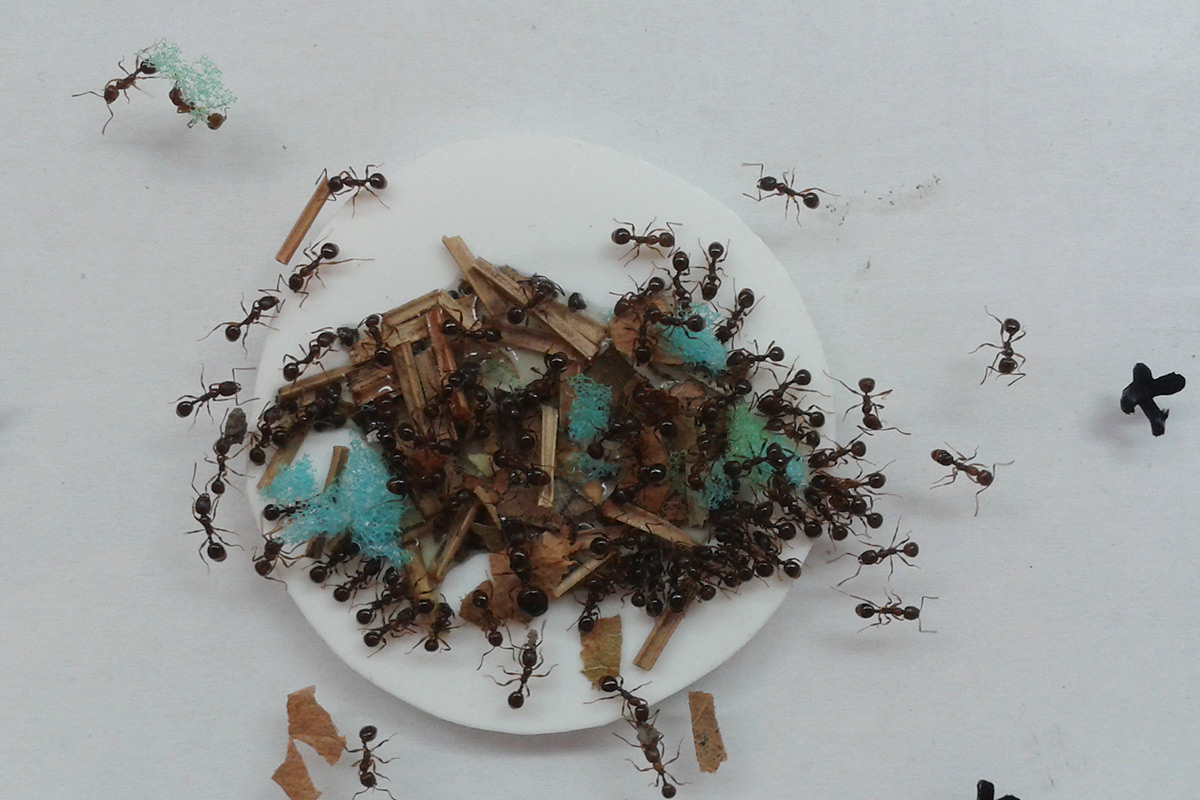
The phrase “good things come in small packages” certainly appears to hold true when it comes to ants. The tiny creatures can survive floods by morphing into rafts, find their way home using an internalized GPS system, and even lift up to 20 times their body weight. In 2013, scientists discovered that the insects, whose brains are smaller than a quarter of a small pin’s head, could even use tools, a skill that was once believed to be the realm of “intelligent” species like humans and a select number of animals. Now, researchers from the University of Szeged in Hungary have discovered that when given a choice, the clever insects even have the smarts to select the most efficient tool for the job.
The team, led by István Maák, conducted experiments on two species of funnel ants: A. subterranea and A. senilis. To test for tool selectivity, the insects were presented with various liquids containing both pure and diluted honey, along with an assortment of instruments to help transport it to their nests. These included tools the insects would find in the wild, such as twigs, pine needles, and soil grains, as well as artificial ones, like sponge and paper.

The team then observed the ants’ behavior for over three hours. The members of the subterranea quickly settled on using small soil grains for the diluted honey, and sponge, to soak up the pure honey. They even learned how to tear the sponge into smaller, more manageable pieces. The senilis, however, carefully tested each option before switching solely to paper and sponge, indicating they were learning and analyzing the properties of the different tools at their disposal.
The researchers, who published their findings in the journal Animal Behavior in January, think that while weight may have played a factor in their choice, the ants ultimately chose their tools based on how easily they could be carried and how well they absorbed liquid. The ants also treated diluted honey and regular honey differently, showing they were aware of how different liquids interacted with the various tools.


In the past, ants, which have the largest brains of any insect, have been observed using mud or sand grains as tools to transport liquid. Though impressive, these are commonly found in their natural environment. What surprised the scientists is their ability to select from foreign objects like paper and sponge, a complex cognitive task.
Maák and his team, believe that the funnel ants evolved this cognitive processing because unlike other members of their species, they can’t expand their stomachs to hold more food. Hence finding an alternate way to transport food is critical for their survival. Valerie S. Banschbach, an ant expert at Virginia’s Roanoke College, believes the insects may be open to experimenting with new materials because the tools available in their natural habitat vary according to the season. The findings that raise new questions about our understanding of the relationship between the size of the brain and the ability to conduct sophisticated cognitive tasks, are a reminder not to underestimate anyone, especially ants!
Resources: dailymail.co.uk, zmescience.com,dailyant.com